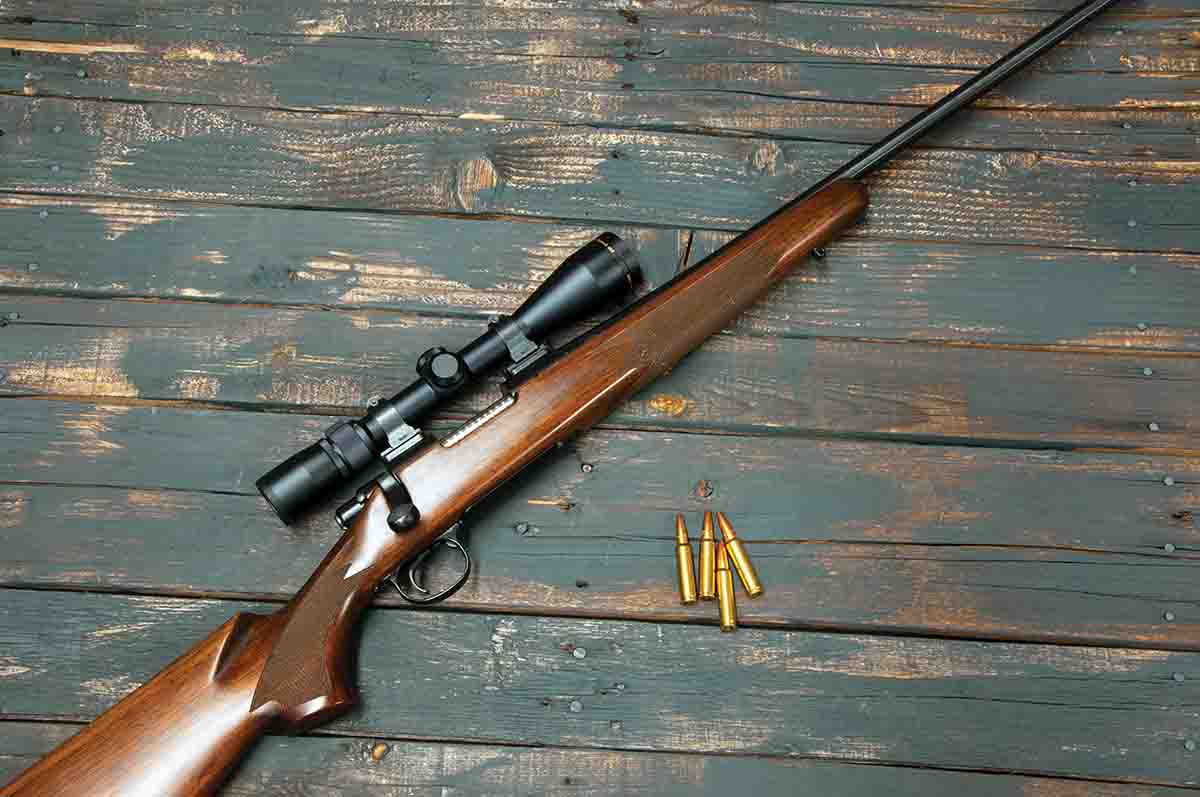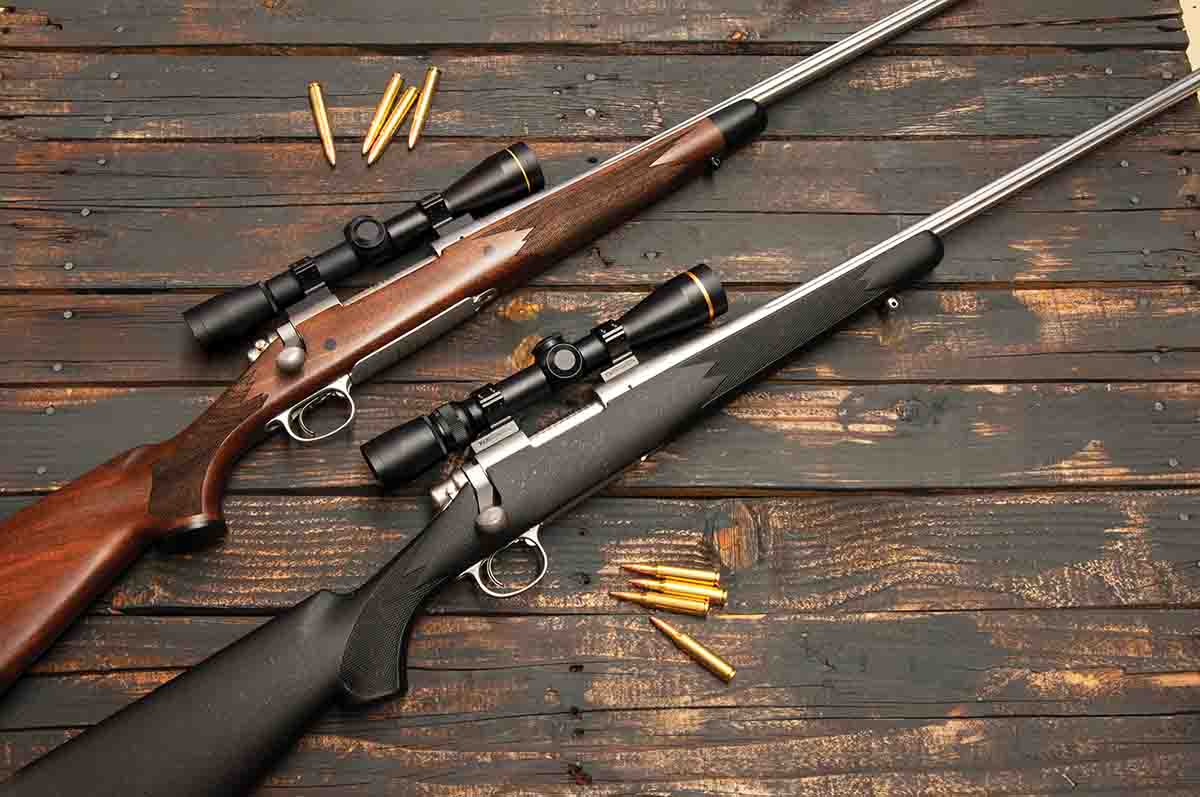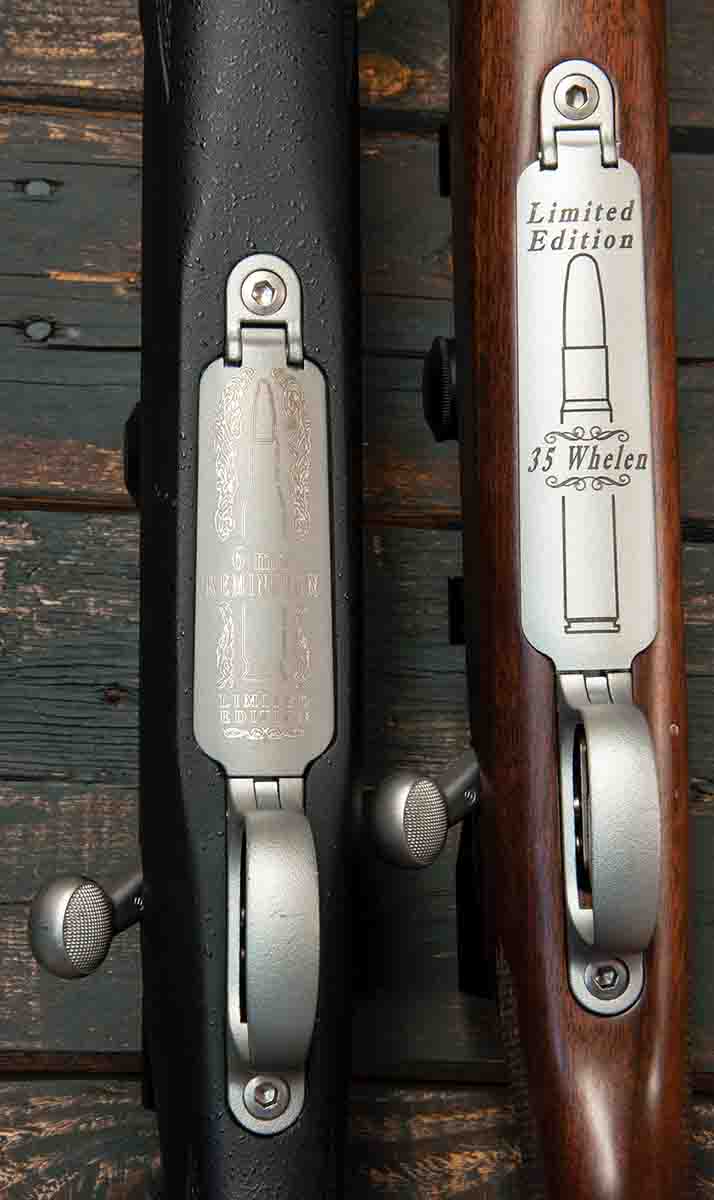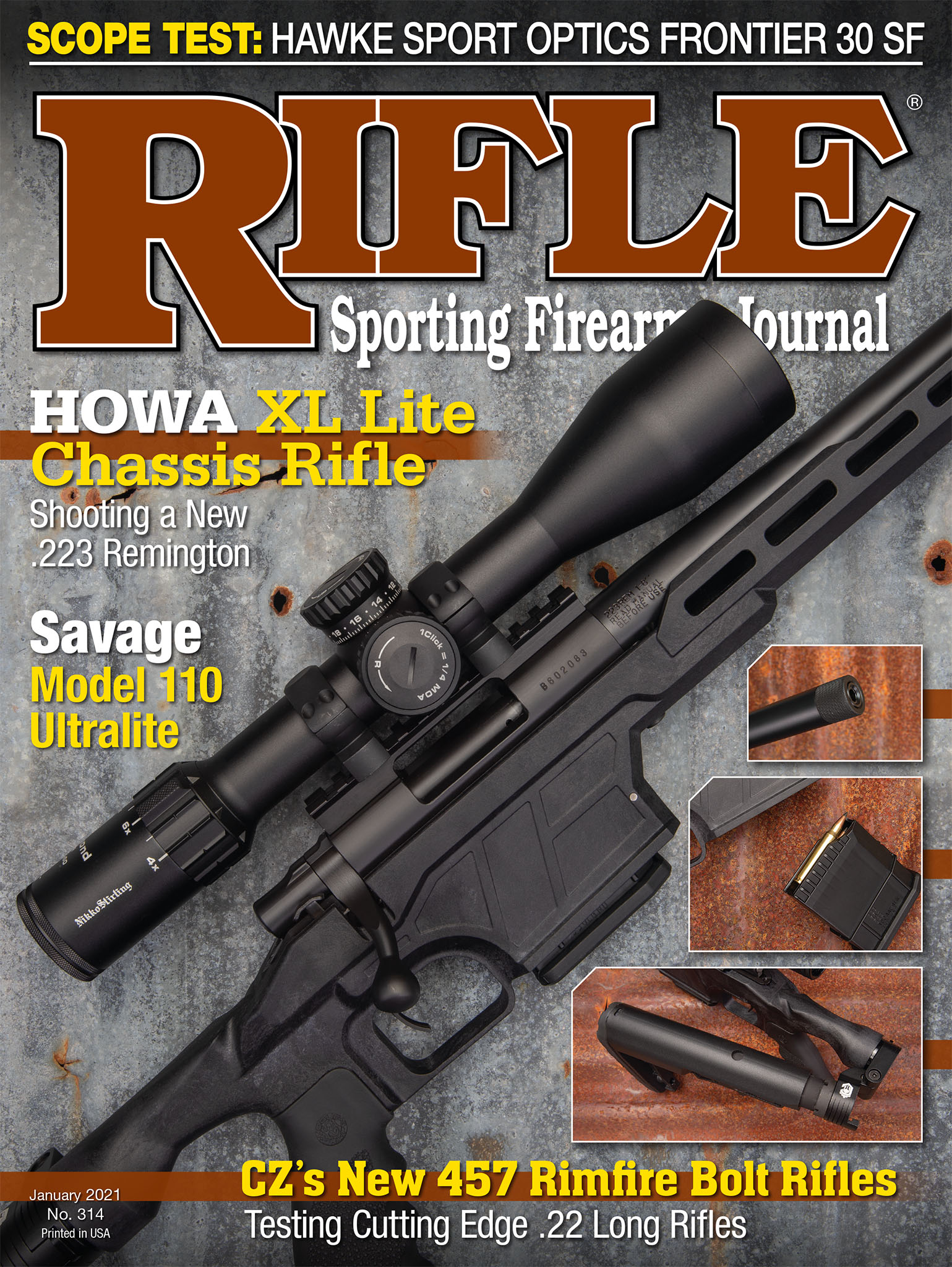Lock, Stock & Barrel
Remington Limited Editions
column By: Lee J. Hoots | January, 21


To my taste, the original BDL stock has always seemed a little awkward due the fact that some scopes can’t be mounted low enough, requiring the shooter to lift his or her cheek from the stock or attaching some sort of stock cuff to align the scope with the eye. This is no way to shoot if expecting consistent accuracy. Worse, it can lead to wounding loss. I prefer a very flat, straight comb and don’t have a whole lot of interest in Remington’s factory-produced open sights simply because they just don’t suit my hunting needs. Several stainless and/or Remington Custom Shop 700s have been more to my liking.
Conversely, the Model 700 Classic, available in limited runs and assorted calibers each year from 1981 to about 2005, is close to exactly what I’ve always wanted in that it’s built on a very straight-combed stock and without sights. All metal, with the exception of the jeweled bolt shank, is finished in a polished blue. This rifle and stock combination is usually referred to as the typical “classic” design, but that means little these days to most hunters. Even though these rifles appeared to be about perfect, I remained skeptical and never bothered to try one out until a friend loaned his .280 Remington. Following a little range testing and whitetail hunting, that rifle was returned, and I purchased a .223 Remington. A year after moving to Arizona, I visited a local gun shop and found a neglected new-in-the-box .300 Savage Classic in a dusty box, purchased it on the spot, and it has been on hand ever since.
The original Classics all featured blued metal, with the exception of the jeweled bolt shank. But the stock is what really grabs my attention. It’s made of dark American walnut with straight grain, a very straight comb and features a low, unobtrusive cheekpiece and fine machine-cut checkering. There is no black synthetic grip cap and forend tip. All of this is complemented by the dark, satin-blue surface finish.
Just like the borrowed .280 Remington, the .300 Savage’s stock is just about right, and when it’s shot on occasion, the stock feels so proper that I wish I would have purchased more of those rifles, perhaps one each of the 24 in the lineup. To the best of my knowledge, the last one offered, in 2005, was a .308 Winchester.

Following that, Remington ramped up with its limited edition Model CDL Stainless Fluted rifles. These, too, are fine rifles with similar stock dimensions, though stock forends are quite a bit slimmer. Cartridges have included the .30-06 (2006), .17 Remington Fireball (2007), .260 Remington (2008), .257 Roberts (2009), .280 Remington (2010), 6mm Remington (2011), 7mm Remington Magnum (2012), .300 Winchester Magnum (2013), .223 Remington (2014), .22-250 Remington (2015), .35 Whelen (2016) and the .300 Weatherby Magnum (2017). Remington eventually moved this line of rifles into its “normal” production line and has added additional cartridges, including the 6.5 Creedmoor and the .300 Winchester Short Magnum, to name a few. Many of these rifles do not include the engraved floorplates found on limited edition rifles introduced earlier, like my .35 Whelen with an etched floorplate.
Unlike the 700 Classic, I find that the CDL Stainless Fluted rifle’s stock is a bit out of place when bedded with a stainless fluted barrel, resulting in a hunting rig that is neither a “lightweight” nor a traditional “classic.” Fine rifle that it is, it just looks strange – a hybrid, if you will, built with no rhyme or reason. This seems to be an unfortunate trend. In spite my own taste, however, the fact is, this is a growing phenomenon among factory-produced sporting rifles. For example, Ruger’s traditional Hawkeye walnut-stocked rifles feature only stainless barrels these days. These rifles have nothing over original blued examples, nor those with a matte-black finish.
While I like Remington’s CDL Stainless Fluted rifle, those that have been purchased over the years have been restocked with aftermarket handles. These include a .280 Remington and a 6mm Remington. The first weighs a bit under 7 pounds (without a scope), and the last weighs nearly the same when topped off with a Leupold VARI-X III 2.5-8x 36mm scope mounted in Talley Lightweight cast scope mounts.
A third CDL Stainless Fluted rifle chambered in .35 Whelen still includes its original walnut stock for two reasons. First, in spite of my inclination to swap its walnut for a “super composite” option, this bolt rifle has not been shot enough to determine if it will stick around. Second, it weighs just less than 8 pounds with a fixed-magnification Leupold FX-II 6x scope. The .35 Whelen cartridge loaded with bullets up to 250 grains is no pussycat when it comes to recoil; push a Swift 250-grain A-Frame to roughly 2,400 feet per second and you end up with nearly 3,100 foot-pounds of energy at the muzzle. Recoil should always be considered.
Of course, every hunter has his or her own ideals when it comes to hunting rifle configuration, and they are not “right” or “wrong” and likely differ from those provided here. But I’ve come to realize what suits my fancy and intend to stick with it.


